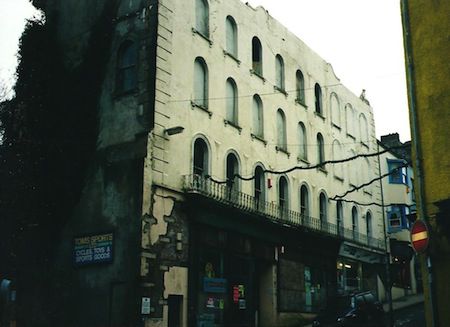Market Street

Commerce House during demolition
For centuries, in fact for most of its life, Market Street was called Shoemaker’s Street. In keeping with such a name, it was the location of the town’s cobblers and behind one or two of the lower properties are still outbuildings that were once leather preparation buildings, or actual shoemaker’s ‘factories’. However, with the relocation of the town’s market, in the 1830s, from its longstanding position in front of St Mary’s Church to the top of Shoemaker’s Street, it seemed appropriate to rename the street.
This relocation resulted in a huge structure being built, capable of accommodating all of the market traders in all weathers which became the hub of the town.
By the twentieth century the Market Hall was where consistent programmes of entertainment were presented. Besides dances and boxing matches, there were auctions, and the hall was also used for the count during elections with the greatest names in politics making speeches here to huge audiences.
By the 1980s, the impact made by supermarkets meant that less trade was being carried on at the Market Hall and a decision was taken to relocate it once again, this time to the riverside at the bottom of the town.
The Hall closed and was eventually demolished to make way for the development of the small housing complex that you see here named Shoemaker’s Court.
At the bottom of Market Street on the right was the location of Commerce House. Founded in the 1860s, the immense department store was considered the finest and biggest in west Wales. The top floor was used as dormitories to accommodate staff who were allowed a visit home late on Saturday evenings after work and had to be back by early Monday morning.
Still a dynamic business at the outbreak of World War II, it was taken over by the military in October 1939 to be used for billeting troops. After an emergency sale of all stock, the business filed for bankruptcy and never recovered.
The building became unsafe in the 1990s and in the early part of this century was demolished and replaced by a replica building that is now residential. The statue on the top is of ‘Export’; there were originally two statues, installed in 1894, but the other, representing ‘Import’, was taken down in the 1960s and broken up.
Cross the road and go in through the wooden gates of St Mary’s Church.